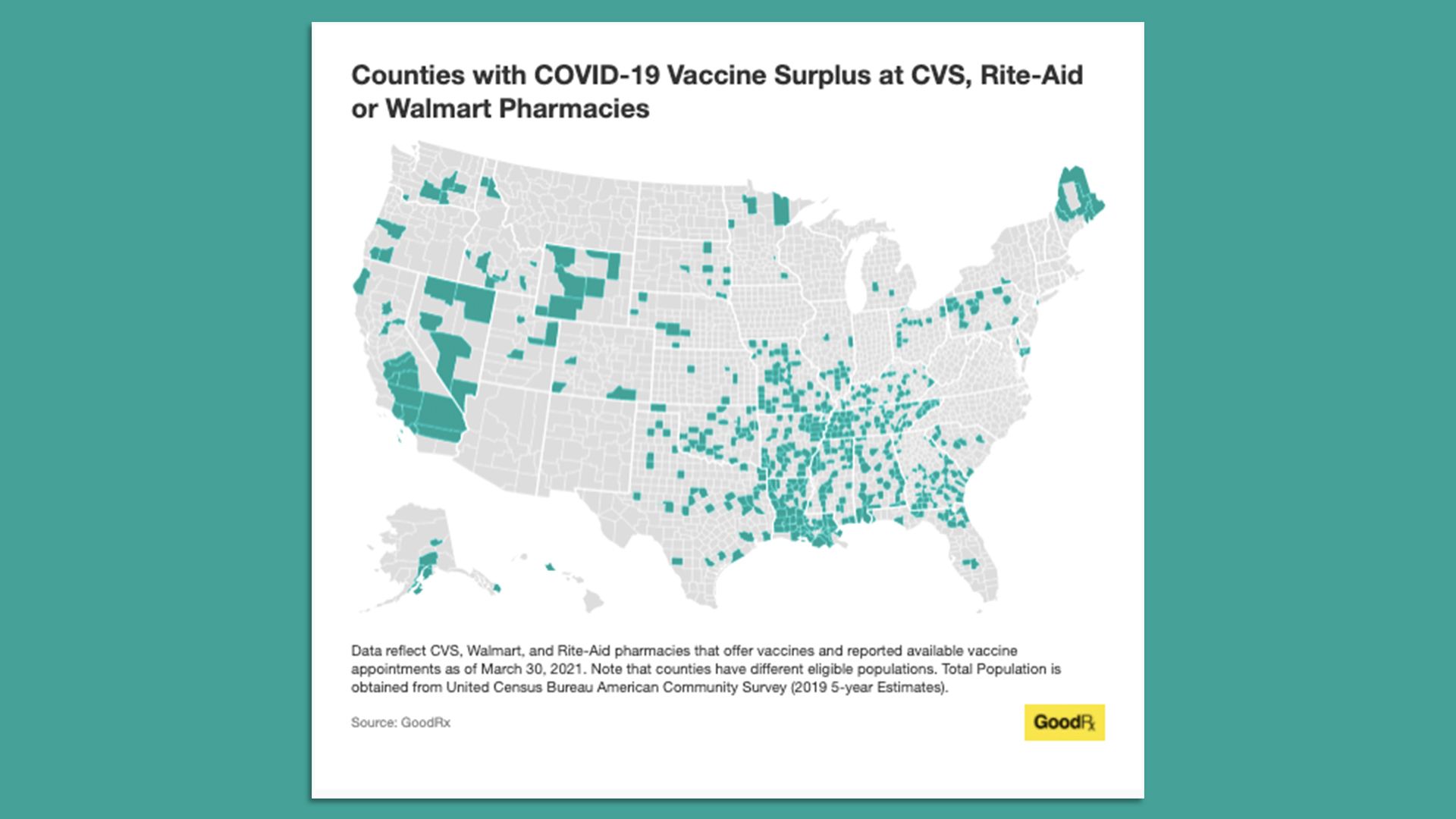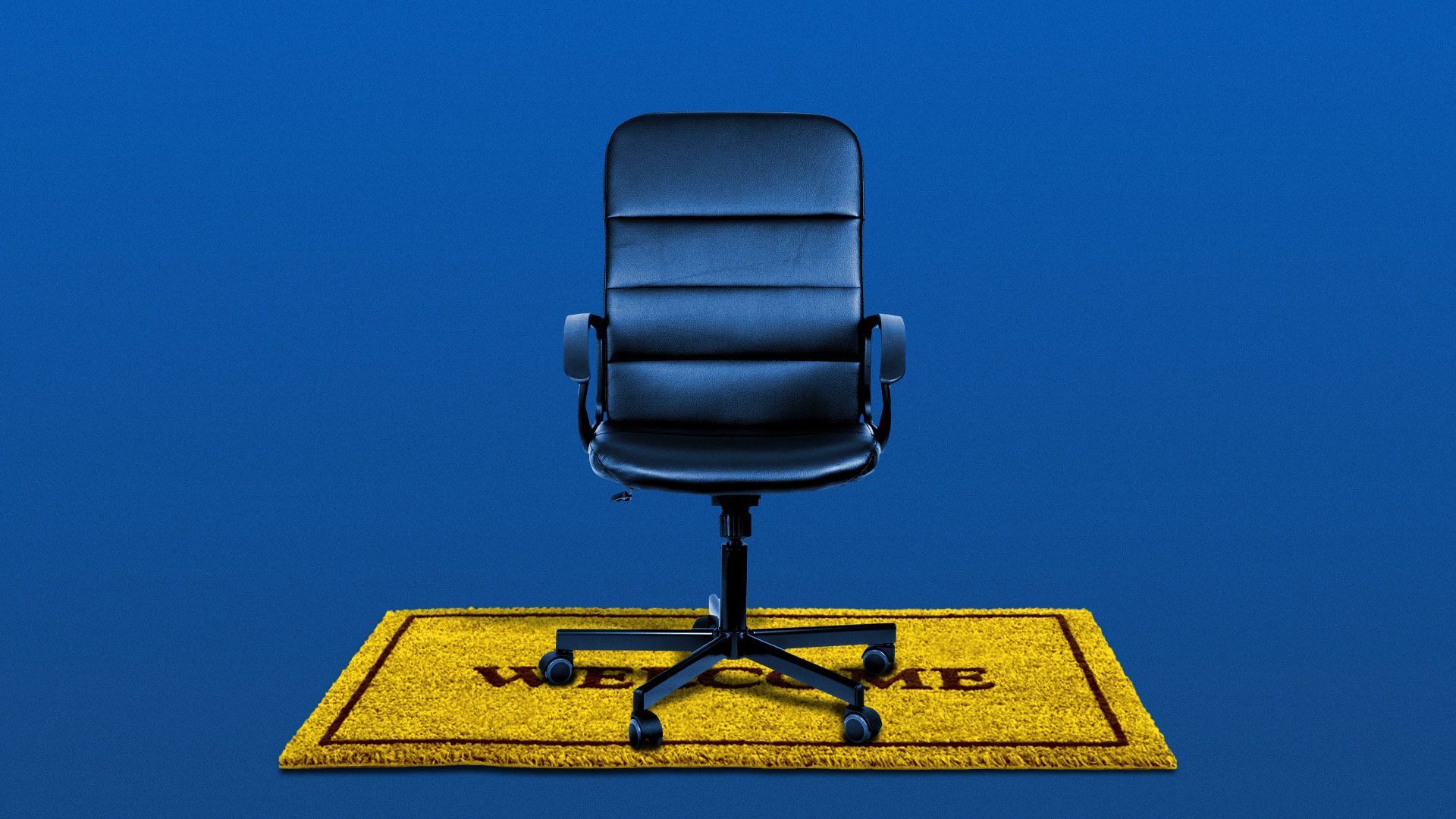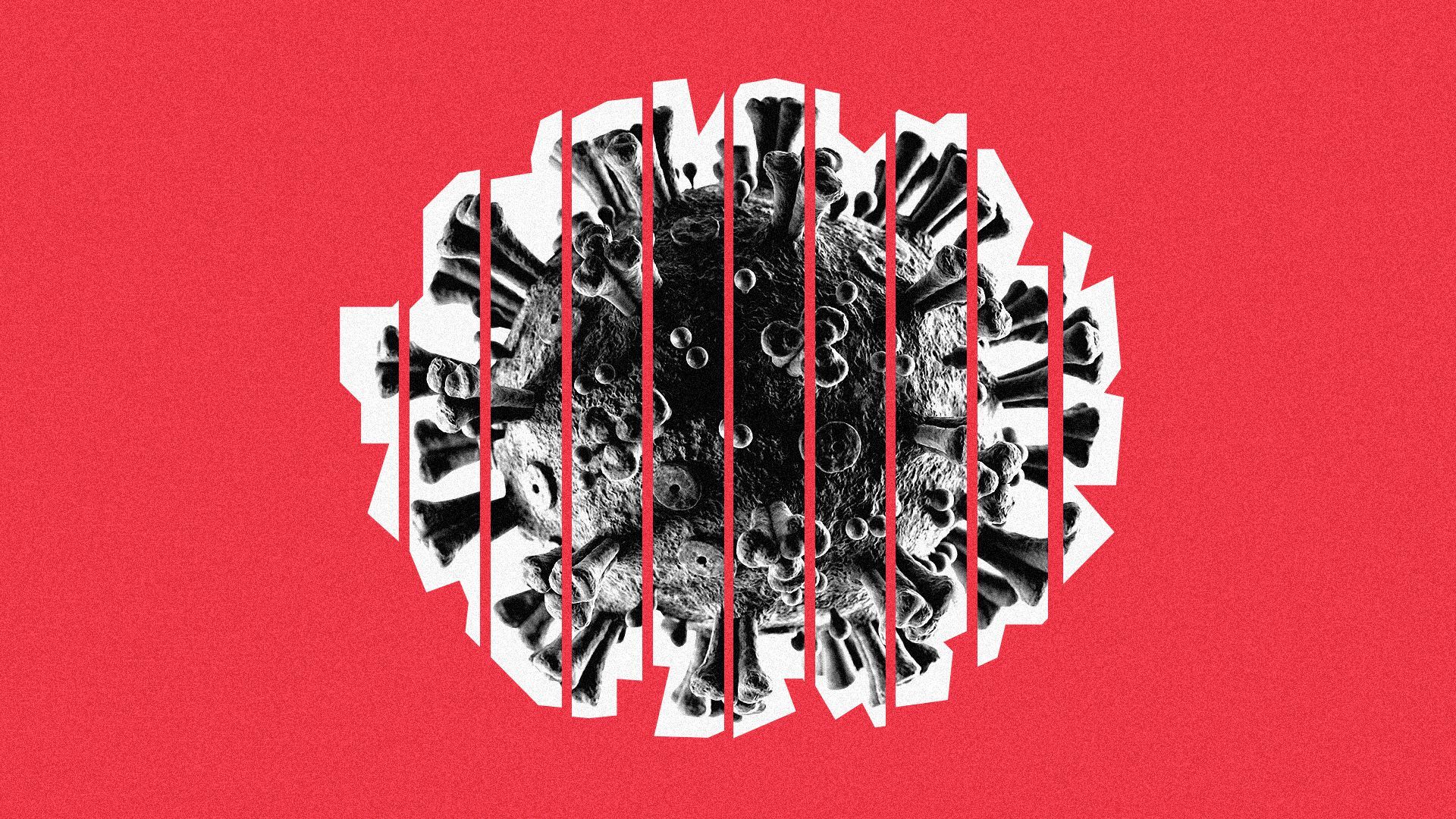| |
| |
| |
| Presented By UnitedHealth Group |
| |
| Vitals |
| By Caitlin Owens ·Mar 31, 2021 |
| Good morning. Today's word count is 924, or a 3-minute read. |
| |
| |
| 1 big thing: Demand for vaccines is waning in some parts of the U.S. |
 Reproduced from U.S. Census Bureau; Chart: Axios Visuals Some states are expanding vaccine eligibility partially because of a troubling reason: Not enough people want to get vaccinated. What we're watching: Vaccine supplies are still limited, but they're already outpacing demand in some parts of the country, especially rural areas. And that could be a bad sign for the future. Where it stands: 14 states have made all adults eligible to receive a coronavirus vaccine, and the vast majority have said they will do so by or before President Biden's May 1 goal. - Many local governments have also broadened their own eligibility criteria, and demand can vary significantly within states.
What they're saying: Vaccine appointments "are not being snapped up in 10 minutes like they were a month ago," Nirav Shah, director of Maine's Center for Disease Control and Prevention and the president of the Association of State and Territorial Health Officials, told the Washington Post. - "This I take as the very earliest sign that we are shifting from urgency to hesitancy," he added.
- "One of the reasons that we are pushing forward on expanding eligibility is because our uptake has been lower than expected," Tennessee's state health commissioner, Lisa Piercey, recently told WCYB.
The big picture: Republicans have emerged as the most vaccine-resistant demographic group in the U.S., followed by white evangelical Christians and rural residents. Details: Among U.S. adults who haven't yet received a coronavirus vaccine, about half say they definitely plan to get one, according to the latest Census Bureau Household Pulse Survey. - The share of people saying they definitely plan to get the vaccine is lowest in ruby-red states like Mississippi, Wyoming, North Dakota and Montana.
- In contrast, states with the highest levels of vaccine enthusiasm among the unvaccinated tend to be blue, including the District of Columbia, Vermont, Washington and Massachusetts.
|
    |
| |
| |
| Bonus map: Where the vacancies are |
 |
|
| Map: GoodRx |
| |
| Explore GoodRx's interactive. |
    |
| |
| |
| 2. Racial disparities in health care affordability |
 Data: Gallup; Chart: Sara Wise/Axios Nearly one in five Americans say they would struggle to afford quality health care today, but people of color are more likely than white people to say they'd struggle, according to a new West Health-Gallup survey. Between the lines: The pandemic may have put a spotlight on racial inequities in health care over the last year, but the problem is long-standing and systemic. By the numbers: Whether respondents said they'd skipped care over the last year due to its cost varied significantly based on income. - 18% of all respondents said they had foregone care. But 35% of respondents from households earning under $24,000 per year said they had skipped care.
- Only 7% of respondents from households earning at least $180,000 said the same.
|
    |
| |
| |
| A message from UnitedHealth Group |
| Three ways UnitedHealth Group is lowering drug costs |
| |
 |
| |
What we're doing:- Our PreCheck MyScript tool saves consumers an average of $225 on each prescription filled.
- The OptumRx discount card saves consumers up to 80% on retail drugs.
- Discounts at the pharmacy counter save consumers $189 per medication.
Learn more. |
| |
| |
| 3. Advocates warn the variant clock is ticking |
| Some experts say the world may only have a year or less to stave off a new round of COVID-19 variants that could evade the existing vaccines, according to survey conducted by advocates trying to speed up vaccinations in developing nations. Why it matters: Variants emerge when viruses spread widely, so quickly vaccinating the entire world is the best way to curb new variants. But some experts are afraid we won't get there fast enough, Axios' Marisa Fernandez reports. The big picture: Much of the developing world won't have widespread access to COVID vaccines until next year, if not later — giving new variants time to form, and to spread. - In a survey of 77 epidemiologists, about two-thirds said the world likely has a year or less before the virus changes so much that existing vaccines wouldn't be effective against the new strains.
- That would require booster shots or new vaccines.
- The survey was sponsored by the People's Vaccine Alliance, an organization that wants to strip some intellectual property protections from vaccine makers in the hopes of producing more doses.
What they're saying: "The virus doesn't respect borders and new variants somewhere on the planet mean none of us are safe," Gregg Gonsalves, associate professor of epidemiology at Yale University, said in the survey. Methodology: The survey was carried out between Feb. 17 and March 25, 2021. Survey respondents include epidemiologists, virologists and infection disease specialists in 28 countries. |
    |
| |
| |
| 4. Office reopening patterns across the country |
 |
|
| Illustration: Eniola Odetunde/Axios |
| |
| Companies are readying workers to return to the office in phased and limited capacities, Axios' Hope King reports. Why it matters: With 29% of the U.S. population having received at least one dose of a COVID-19 vaccine, businesses are inching toward reopening at different paces depending on geography and previously announced policies. On the West Coast: It's slow and gradual in areas deemed moderate risk or in the final stages of reopening. In New York: It's still a little unclear. - Employers generally expect 45% of the workforce to return to work by September, but that number is down from an expected 48% by July when surveyed last October, according to an early March survey from the Partnership for New York City.
In Miami: It's about to get even more crowded. - Softbank is the latest tech giant looking to join the Miami expansion party, as the company is reportedly looking for as much as 100,000 square feet of space, according to the Wall Street Journal.
The big picture: A vast majority (82%) of business leaders said last year they would allow employees to work remotely in some capacity after the pandemic. That sentiment will continue to shape how, when and if offices reopen. Go deeper: What's next at work after the coronavirus pandemic |
    |
| |
| |
| 5. Catch up quick |
 |
|
| Illustration: Aïda Amer/Axios |
| |
| World Health Organization director-general Tedros Adhanom Ghebreyesus welcomed the joint WHO-China report on the origins of the coronavirus on Tuesday, but he noted that scientists had difficulty "accessing raw data" from China and called for further investigation of the lab leak theory. Scientists are exploring what happens when doses of two different coronavirus vaccines are mixed, NYT reports. Schools in the U.S. and Europe should be approaching some version of "normal" by this fall, but the outlook is much different in poor countries, Alice Albright, CEO of the Global Partnership for Education, told Axios' Dave Lawler. |
    |
| |
| |
| A message from UnitedHealth Group |
| UnitedHealth Group's ideas to lower drug costs |
| |
 |
| |
How to lower drug costs: - Capping drug exclusivity can save Medicare more than $20 billion.
- Fully leveraging pharmacy benefit managers can save Medicaid $112 billion over 10 years.
- Value-based prescription drug payments can lower consumers' out-of-pocket costs by 28%.
Learn more. |
| |
| This newsletter is written in Smart Brevity®. Learn how your team can communicate in the same smart, clear style with Axios HQ. |








No comments:
Post a Comment